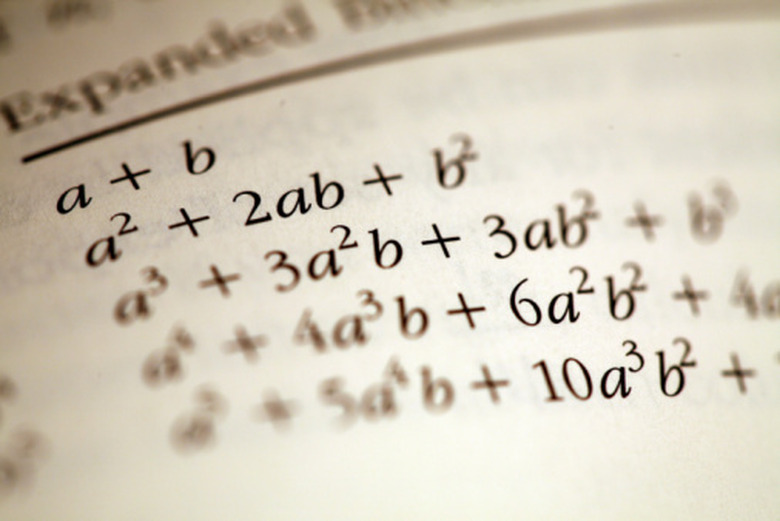Associative & Commutative Properties Of Multiplication
Multiplication and addition are related mathematical functions. Adding the same number multiple times will produce the same result as multiplying the number by the number of times the addition was repeated, so that 2 + 2 + 2 = 2 × 3 = 6. This relationship is further illustrated by similarities between the associative and commutative properties of multiplication and the associative and commutative properties of addition. These properties relate that the order of the numbers in an addition or multiplication number do not change the result of the equation. It is important to note that these properties only apply to addition and multiplication and not to subtraction or division, where changing the order of the numbers in the equation will change the result.
Commutative Property of Multiplication
Commutative Property of Multiplication
When multiplying two numbers, reversing the order of the numbers in the equation results in the same product. This is known as the commutative property of multiplication and is quite similar to the associative property of addition. For example, multiplying three by six equals six times three (3 × 6 = 6 × 3 = 18). Expressed in algebraic terms, the commutative property is:
\(a × b = b × a\)
or simply
\(ab = ba\)
Associative Property of Multiplication
Associative Property of Multiplication
The associative property of multiplication may be viewed as an extension of the commutative property of multiplication and parallels the associative property of addition. When multiplying more than two numbers, changing the order in which the numbers are multiplied, or how they are grouped results in the same product. For instance, (3 × 4) × 2 = 12 × 2 = 24. Changing the order of multiplication to 3 × (4 × 2) produces 3 × 8 = 24. In algebraic terms, the associative property may be described as :
\((a + b) + c = a + (b + c)\)
Commutative Property of Addition
Commutative Property of Addition
It may be helpful to remember the associative and commutative properties of addition in reference to the associative and commutative properties of multiplication. According to the commutative property of addition, two numbers added together results in the same sum whether they're added forwards or backwards. In other words, two plus six equals eight and six plus two also equals eight (2 + 6 = 6 + 2 = 8) and is reminiscent of the commutative property of multiplication. Again, this may be expressed algebraically as
\(a + b = b + a\)
Associative Property of Addition
Associative Property of Addition
In the associative property of addition, the order which more than three or more sets of numbers are added together does not change the sum of the numbers. Thus, (1 + 2) + 3 = 3 + 3 = 6. Just as in the associative property of multiplication, changing the order does not change the result since 1 + (2 + 3) = 1 + 5 = 6. Algebraically, the associative property of addition is
\((a + b) + c = a + (b + c)\)
Cite This Article
MLA
Chandler, David. "Associative & Commutative Properties Of Multiplication" sciencing.com, https://www.sciencing.com/associative-communative-properties-multiplication-8566732/. 26 October 2020.
APA
Chandler, David. (2020, October 26). Associative & Commutative Properties Of Multiplication. sciencing.com. Retrieved from https://www.sciencing.com/associative-communative-properties-multiplication-8566732/
Chicago
Chandler, David. Associative & Commutative Properties Of Multiplication last modified August 30, 2022. https://www.sciencing.com/associative-communative-properties-multiplication-8566732/
